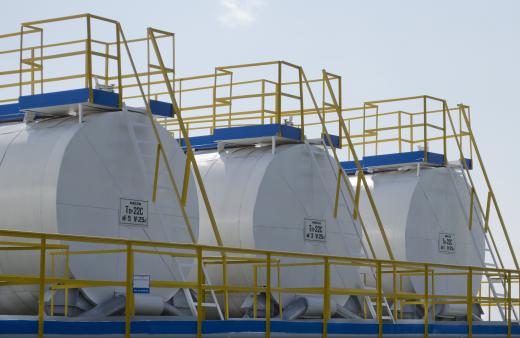A drain valve is a mechanical device used to release excess or unwanted quantities of liquid or gas from a storage tank, vessel or container. The valve is usually opened by turning a screw or handle, although some drain valves are automatically opened when a set pressure or temperature is reached. When the valve is opened, liquid or air drains from the storage tank due to gravity or pressure differential.
A drain valve usually consists of a hollow, cylindrical body and a stem. The stem sits perpendicular to the axis of the hollow portion of the body. The liquid or gas flows through the hollow portion of the body when the stem is open. When turned, the stem acts to close the path through the body, effectively preventing the liquid or gas from escaping. In some drain valve designs, the stem itself blocks the flow, while in others the stem is used to raise or lower a gate that blocks the flow. This gate can take the form of a disk or ball, depending on the particular design.

There are several different styles of drain valves, ranging in complexity from simple screw plugs to automated, electrically-controlled models. The simple oil drain valve on an automobile is possibly the least complex, as it consists of only a threaded plug inserted into a corresponding threaded hole in the engine oil pan. The plug acts as the valve stem, and it is operated by simply removing the plug from the oil pan. On the other end of the spectrum, highly complex valves exist that are electrically controlled to open at preset times or in response to certain preset temperature or pressure thresholds.
Drain valves are used in a variety of applications. They are widely used in air compressors and air supply lines, for example. An air drain valve allows the removal of potentially harmful condensates such as water, oil or rust. These contaminates can build up over time and can lead to airline obstruction or weakening of the storage tank. Excess water in the system could cause the interior of steel storage tanks to rust as w. Automatic air drain valves are commonly used on large trucks with air braking systems to drain oil and water that could potentially cause the brakes to fail.
A water heater drain valve is used to periodically drain water and remove contaminates from hot water heaters. Over time, mineral scale consisting of calcium or other minerals can form on the inside of water heaters. Sediments such as dirt or sand can build up in the bottom of the tank as well. This lowers the heating efficiency of the heating elements and can eventually lead to permanent damage if left unchecked. Periodically opening the drain valve can allow most of these contaminates to drain from the hot water heater.
